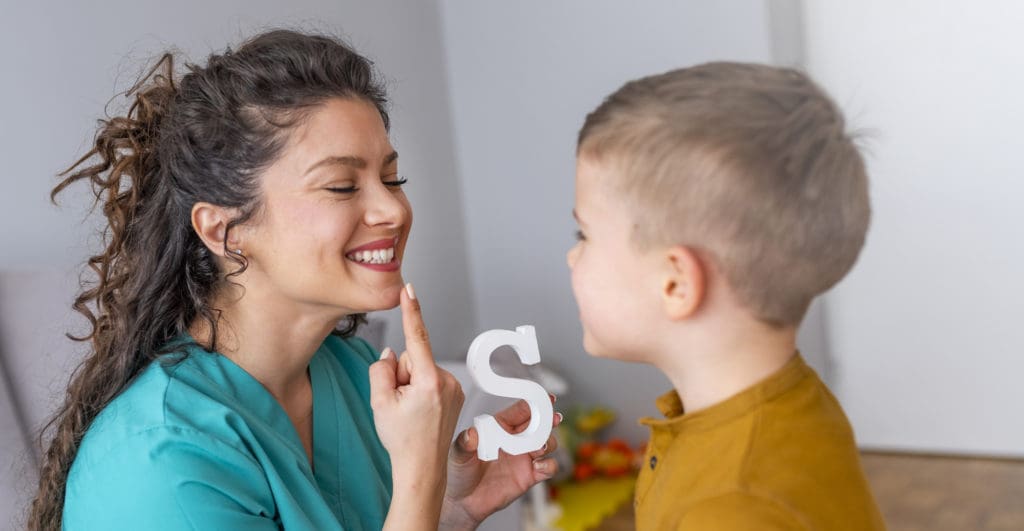
Functional Communication Training
Communication is a fundamental skill that enables us to express our wants and needs effectively. Children with autism and other developmental concerns often have difficulty expressing themselves in appropriate ways. They tend to replace language, such as “I need help,” “Play with me,” “Too loud,” and even shaking their head “no,” with maladaptive behavior because they lack the communication skills that we take for granted.
Here at The Behavior Exchange, we use Functional Communication Training (FCT, a form of ABA therapy) to help children learn communication skills, so they can express their wants, needs, thoughts, and feelings effectively and appropriately. The purpose of FCT is to replace maladaptive behaviors with appropriate and functional communication responses.
This blog is written with parents in mind. We outline five basic steps of FCT and how to apply them with your child at home. Please keep in mind this guide should only be used if your goal is to replace non-dangerous, challenging behavior with effective communication skills.
If your child exhibits any unsafe behavior that causes harm to themselves, others, or property, please contact The Behavior Exchange or an ABA therapy provider in your area. Such cases require the professional help and expertise of a Board Certified Behavior Analyst.
Ok then, let’s get started.
The 5 Basic Steps of Functional Communication Training
1) Identify the challenging/unwanted behavior.
What specifically is your child doing that needs to be replaced with functional communication? For example, are they crying, screaming, or running away? Then, write the behavior down.
2) Identify the function, or purpose, of the unwanted behavior.
- • Attention – Positive or negative. Remember, attention is attention.
- • Escape/Avoidance – Removal or avoidance of something or someone.
- • Access to a Tangible – A cookie, toy, or any other thing they want.
- • Sensory – Music or TV is too loud or lighting is too bright or dark, for example.
3) Identify the replacement behavior or functional communication response.
Once you know the function or purpose of the unwanted behavior (see #2 above), you can determine what functional communication response to teach your child. Once you know what that is, you’re ready to teach it.
The key is to find a functional way to communicate the response you’re after is easier to do than the maladaptive behavior. So, start small either at or below where your child is currently communicating. If your child has limited vocal language, give them a picture card or a sign/gesture they can use immediately instead of the unwanted behavior.
4) Teach and reinforce the functional communication response.
Create opportunities for your child to learn and use the functional communication response or use teachable moments when they occur naturally.
You can prime and/or use a prompt immediately after presenting the antecedent (a.k.a. what happens before a behavior occurs). For example, say, “I’m going to ask you to turn off your game. When I do, say, ‘More time, please.’ Let’s practice. Time to turn off your game. Say, ‘More time please.”
When your child responds, reinforce or reward them for asking appropriately.
5) Fade your prompts until your child communicates independently.
Keep presenting the learning opportunity and gradually fade your prompts until your child is using the functional communication phrase on their own. This may take several times, days, or a few weeks, depending on your child. Don’t give up or reinforce the challenging behavior without using functional communication.
What if my child uses functional communication, but answers “no”?
Then the answer is “no.” However, there are things you can do to help keep your child from escalating. A few ways you can respond is by first praising them for using their words, and then:
- • Use a “First, Then” statement. For example, “Put your toys away, then you can watch TV.”
- • Offer alternatives. For example, “Not right now, but you can have (blank) or (blank).”
- • Respond without using the word “no,” especially if it’s already a word associated with escalation. Say, “Yes, after (blank),” or “We can do (blank) or (blank) instead.”
In addition, learning to accept a “no” is another critical skill for children to learn. More information on that topic can be found here, or you can just contact us. We offer help and hope that make a difference!
This blog entry was written by Jayden Conte, BCBA.
